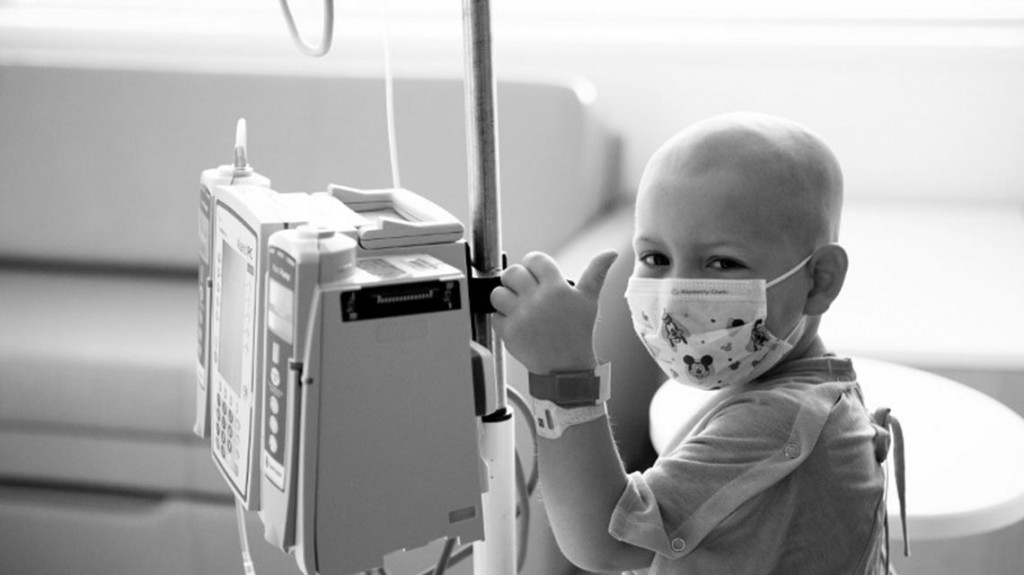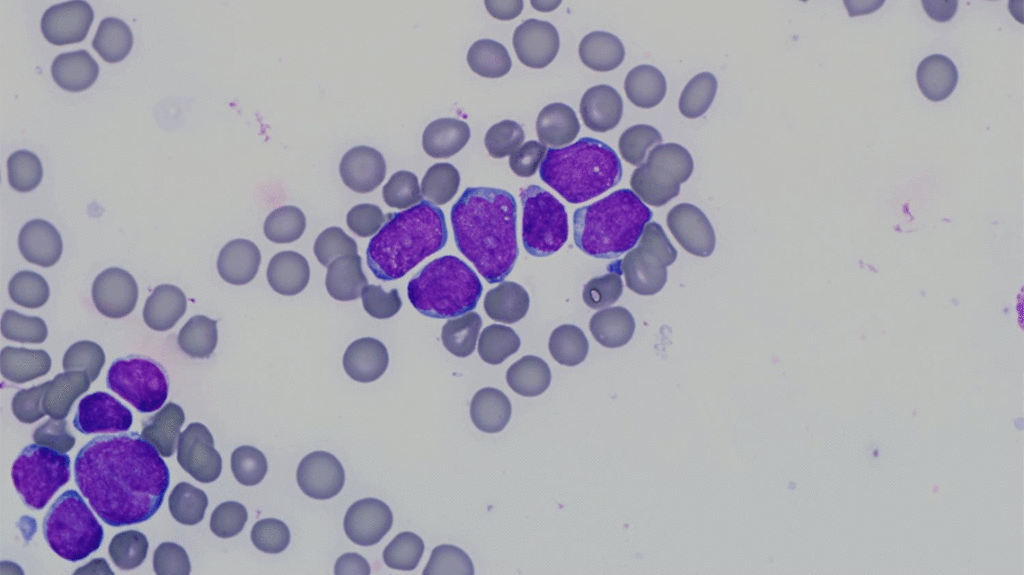Mary Bates, PhD
Targeting a Bacterial Switch to Treat Chronic Ear Infections
Targeting a Bacterial Switch to Treat Chronic Ear Infections https://pediatricsnationwide.org/wp-content/themes/corpus/images/empty/thumbnail.jpg 150 150 Mary Bates, PhD Mary Bates, PhD https://secure.gravatar.com/avatar/c6233ca2b7754ab7c4c820e14eb518c8?s=96&d=mm&r=gTreating Pilonidal Disease with Laser Hair Depilation
Treating Pilonidal Disease with Laser Hair Depilation https://pediatricsnationwide.org/wp-content/themes/corpus/images/empty/thumbnail.jpg 150 150 Mary Bates, PhD Mary Bates, PhD https://secure.gravatar.com/avatar/c6233ca2b7754ab7c4c820e14eb518c8?s=96&d=mm&r=gLymphocyte Response After a Burn Predicts Infection
Lymphocyte Response After a Burn Predicts Infection https://pediatricsnationwide.org/wp-content/themes/corpus/images/empty/thumbnail.jpg 150 150 Mary Bates, PhD Mary Bates, PhD https://secure.gravatar.com/avatar/c6233ca2b7754ab7c4c820e14eb518c8?s=96&d=mm&r=gMore Screening Needed for Young Females at Risk for von Willebrand Disease
More Screening Needed for Young Females at Risk for von Willebrand Disease https://pediatricsnationwide.org/wp-content/uploads/2018/06/TeenGirl.gif 1024 575 Mary Bates, PhD Mary Bates, PhD https://secure.gravatar.com/avatar/c6233ca2b7754ab7c4c820e14eb518c8?s=96&d=mm&r=gA new study finds most girls with heavy menstrual bleeding are not screened for the bleeding disorder. Despite recommendations by the American College of Obstetricians and Gynecologists, approximately 90 percent of girls with heavy menstrual bleeding are not being screened for von Willebrand disease, according to a new study from Nationwide Children’s Hospital. “Von Willebrand disease is…
Improving Feeding and Growth in Children With Cleft Palate
Improving Feeding and Growth in Children With Cleft Palate https://pediatricsnationwide.org/wp-content/uploads/2018/05/FormulaBottle.gif 1024 575 Mary Bates, PhD Mary Bates, PhD https://secure.gravatar.com/avatar/c6233ca2b7754ab7c4c820e14eb518c8?s=96&d=mm&r=gTargeted interventions result in improved feeding efficiency and growth in infants with cleft lip and/or palate. Cleft lip and/or palate is a relatively common birth defect that occurs when certain parts of the face and mouth fail to fuse during development. Infants with the condition can struggle to suck or extract liquid from the breast…
Femoral Nerve Blockade May Reduce Need for Intravenous Opioids
Femoral Nerve Blockade May Reduce Need for Intravenous Opioids https://pediatricsnationwide.org/wp-content/themes/corpus/images/empty/thumbnail.jpg 150 150 Mary Bates, PhD Mary Bates, PhD https://secure.gravatar.com/avatar/c6233ca2b7754ab7c4c820e14eb518c8?s=96&d=mm&r=gResearchers find no differences in postoperative pain measures for patients receiving intravenous opioids and those receiving regional anesthetic. Femur fractures often require surgical fixes and can be quite painful. Although traditionally treated with intravenous opioids, regional anesthesia may offer an alternative option. In a new study, published in the Journal of Pain Research, researchers evaluated the…
How to Identify and Treat Blood Clots in Pediatric Patients With Cancer
How to Identify and Treat Blood Clots in Pediatric Patients With Cancer https://pediatricsnationwide.org/wp-content/uploads/2018/04/062012bs478-1024x575-1.jpg 1024 575 Mary Bates, PhD Mary Bates, PhD https://secure.gravatar.com/avatar/c6233ca2b7754ab7c4c820e14eb518c8?s=96&d=mm&r=gNew guidelines will help doctors recognize and treat children at risk of venous thromboembolism. Prevention of blood clots is well described in adult cancer patients, but data on the problem in pediatric cancer patients is limited. In a new publication initiated at the request of the International Society of Thrombosis and Hemostasis, researchers provide guidance for…
What Happens When Cancer Remission Is in Question?
What Happens When Cancer Remission Is in Question? https://pediatricsnationwide.org/wp-content/uploads/2018/03/leukemia.gif 1024 575 Mary Bates, PhD Mary Bates, PhD https://secure.gravatar.com/avatar/c6233ca2b7754ab7c4c820e14eb518c8?s=96&d=mm&r=gA new study looks at outcomes for children with leukemia when two tests of remission disagree. In both clinical practice and clinical trials, remission in leukemia is determined by morphological assessment — a person counting cancer cells in a bone marrow sample under a microscope. But more sophisticated technologies, such as flow cytometry or polymerase…
Large-Scale Genomics Study Identifies Children With High-Risk Cancer
Large-Scale Genomics Study Identifies Children With High-Risk Cancer https://pediatricsnationwide.org/wp-content/themes/corpus/images/empty/thumbnail.jpg 150 150 Mary Bates, PhD Mary Bates, PhD https://secure.gravatar.com/avatar/c6233ca2b7754ab7c4c820e14eb518c8?s=96&d=mm&r=gSome subtypes of leukemia have a poor prognosis. Genomic studies are helping to identify these subtypes, leading to targeted therapies. Acute lymphoblastic leukemia (ALL), a malignancy of the white blood cells, is a common childhood cancer. Understanding the genomic changes underlying ALL has led to the development of new, targeted therapies, especially for patients with…
Making Stem Cell Transplantation Work for Sickle Cell Disease
Making Stem Cell Transplantation Work for Sickle Cell Disease https://pediatricsnationwide.org/wp-content/themes/corpus/images/empty/thumbnail.jpg 150 150 Mary Bates, PhD Mary Bates, PhD https://secure.gravatar.com/avatar/c6233ca2b7754ab7c4c820e14eb518c8?s=96&d=mm&r=gNew regimen offers a promising approach for unrelated donor transplants. Sickle cell disease (SCD) is a blood disorder affecting 1 in every 500 African-American newborns. It is characterized by extreme pain and decreased longevity. Currently, the only cure for SCD lies in hematopoietic stem cell transplantation. A well-matched sibling donor is needed for the best…
How Genes and Environment Interact to Raise Risk of Congenital Heart Defects
How Genes and Environment Interact to Raise Risk of Congenital Heart Defects https://pediatricsnationwide.org/wp-content/themes/corpus/images/empty/thumbnail.jpg 150 150 Mary Bates, PhD Mary Bates, PhD https://secure.gravatar.com/avatar/c6233ca2b7754ab7c4c820e14eb518c8?s=96&d=mm&r=gGenetic susceptibility plus maternal hyperglycemia interact to contribute to heart defects during fetal development. Infants of mothers with diabetes have a three- to five-fold increased risk of congenital heart defects. Such developmental defects are likely caused by a combination of genetic and environmental factors. However, the molecular mechanisms by which maternal diabetes disrupts normal heart…
Different Patterns of Executive Function Deficits in Different Pediatric Brain Disorders
Different Patterns of Executive Function Deficits in Different Pediatric Brain Disorders https://pediatricsnationwide.org/wp-content/themes/corpus/images/empty/thumbnail.jpg 150 150 Mary Bates, PhD Mary Bates, PhD https://secure.gravatar.com/avatar/c6233ca2b7754ab7c4c820e14eb518c8?s=96&d=mm&r=gClinical implications include specialized testing for deficits in executive function as these may not be apparent at a routine exam. A large group of researchers, including many from Nationwide Children’s Hospital, recently looked at whether children with different brain disorders show diverse patterns of strengths and weaknesses in executive functions. Children with traumatic brain injuries…
Combining Immunotherapies Effective Against Mouse Model of Cancer
Combining Immunotherapies Effective Against Mouse Model of Cancer https://pediatricsnationwide.org/wp-content/themes/corpus/images/empty/thumbnail.jpg 150 150 Mary Bates, PhD Mary Bates, PhD https://secure.gravatar.com/avatar/c6233ca2b7754ab7c4c820e14eb518c8?s=96&d=mm&r=gRecent study results suggest that combining virotherapy and PD-1 blockades may be more effective than either approach alone. Rhabdomyosarcoma, a cancer made up of cells that normally develop into skeletal muscles, is the most common soft tissue cancer in children. If it is detected early and localized in certain areas, rhabdomyosarcoma is usually curable with…
Balancing Immune Activation and Suppression After Cardiopulmonary Bypass
Balancing Immune Activation and Suppression After Cardiopulmonary Bypass https://pediatricsnationwide.org/wp-content/themes/corpus/images/empty/thumbnail.jpg 150 150 Mary Bates, PhD Mary Bates, PhD https://secure.gravatar.com/avatar/c6233ca2b7754ab7c4c820e14eb518c8?s=96&d=mm&r=gUnderstanding how the immune system responds to CPB could dramatically impact postsurgical outcomes. Cardiopulmonary bypass (CPB) is a relatively routine procedure, generally with favorable outcomes. However, among the risks posed to patients is the over- or under-activation of the immune system following the surgery. Mark Hall, MD, FCCM, division chief of Critical Care at Nationwide Children’s Hospital,…
Cognitive Behavioral Therapy Can Help Children With Persistent Post-Concussive Symptoms
Cognitive Behavioral Therapy Can Help Children With Persistent Post-Concussive Symptoms https://pediatricsnationwide.org/wp-content/themes/corpus/images/empty/thumbnail.jpg 150 150 Mary Bates, PhD Mary Bates, PhD https://secure.gravatar.com/avatar/c6233ca2b7754ab7c4c820e14eb518c8?s=96&d=mm&r=gA psychological intervention improves kids’ function and quality of life even years after a concussion. For most children and adolescents that experience concussions, symptoms resolve after a week or two. However, a small subset of kids has persistent symptoms lasting for months or even years after the injury. These symptoms can be disruptive and stressful,…
Why Patients With Diabetes Have More UTIs
Why Patients With Diabetes Have More UTIs https://pediatricsnationwide.org/wp-content/themes/corpus/images/empty/thumbnail.jpg 150 150 Mary Bates, PhD Mary Bates, PhD https://secure.gravatar.com/avatar/c6233ca2b7754ab7c4c820e14eb518c8?s=96&d=mm&r=gInsulin regulates an antimicrobial peptide that is suppressed in patients with diabetes. A recent study led by clinicians and researchers at Nationwide Children’s Hospital reports a potential explanation for why urinary tract infections (UTIs) are so common in patients with diabetes – insulin regulates an antimicrobial peptide (AMP) that is suppressed in those patients. Patients…






